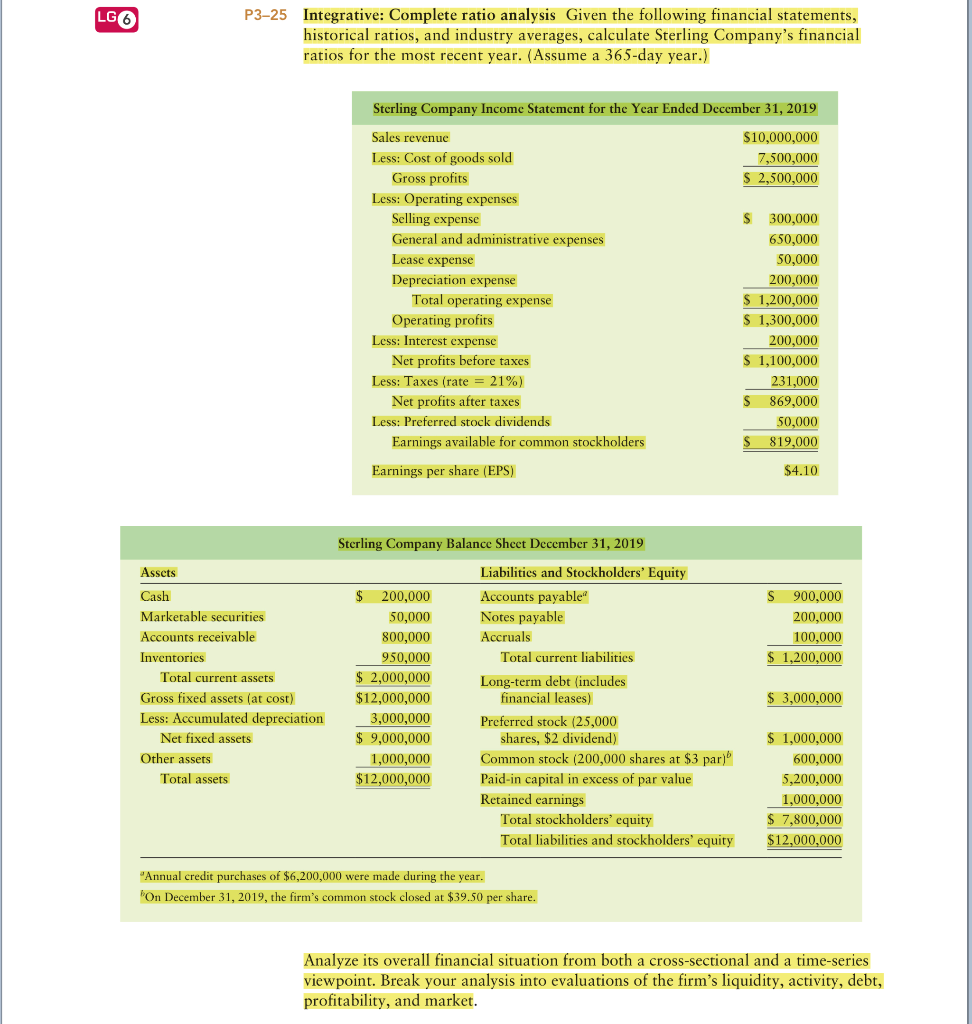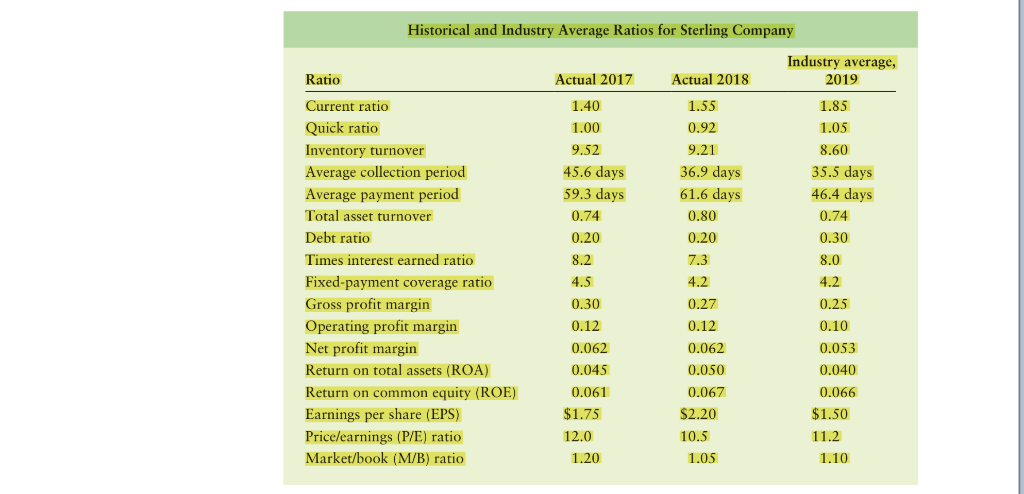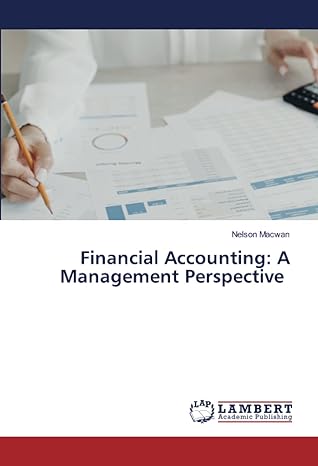

Integrative: Complete ratio analysis Given the following financial statements, historical ratios, and industry averages, calculate Sterling Company's financial ratios for the most recent year. (Assume a 365-day year.) LG P3-25 Sterling Company Income Statement for the Year Ended December 31, 2019 $10,000,000 7,500,000 S 2,500,000 Sales revenue Less: Cost of goods sold Gross profits Less: Operating expenses Selling expen General and administrative expenses Lease expense Depreciation expense S 300,000 650,000 50,000 200,000 S 1,200,000 S 1,300,000 200,000 S 1,100,000 231,000 S 869,000 50,000 819,000 $4.10 Total operating expense Operating profits Less: Interest expense Net profits before taxes Less: Taxes (rate = 21%) Net profits after taxes Less: Preferred stock dividends Earnings available for common stockholders Earnings per share (EPS) Sterling Company Balance Shect December 31, 2019 Asscts Cash Marketable securities Accounts receivable Inventories Liabilitics and Stockholders' Equity Accounts payable Notes payable Accruals $ 200,000 50,000 800,000 950,000 $ 2,000,000 $12,000,000 3,000,000 $ 9,000,000 1,000,000 $12,000,000 S 900,000 200,000 100,000 $ 1,200,000 Total current liabilitics Total current assets Gross fixed assets (at cost) Less: Accumulated depreciation Long-term debt (includes financial leases) Preferred stock (25,000 $ 3,000,000 shares, $2 dividend) Common stock (200,000 shares at $3 par)b Paid-in capital in excess of par value Retained earnings Net fixed assets Other assets S 1,000,000 600,000 5,200,000 1,000,000 $ 7,800,000 Total liabilities and stockholdersequity $12,000,000 Total assets Total stockholders' equity "Annual credit purchases of $6,200,000 were made during the year. On December 31, 2019, the firm's common stock closed at $39.50 per share. Analyze its overall financial situation from both a cross-sectional and a time-series viewpoint. Break your analysis into evaluations of the firm's liquidity, activity, debt profitability, and market Historical and Industry Average Ratios for Sterling Company Industry average, Ratio Current ratio Quick ratio Inventory turnover Average collection period Average payment period Total asset turnover Debt ratio Times interest earned ratio Fixed-payment coverage ratio Gross profit margin Operating profit margin Net profit margin Return on total assets (ROA) Return on common equity (ROE) Earnings per share (EPS) Price/earnings (P/E) ratio Market/book (M/B) ratio Actual 2017 Actual 2018 1.40 1.00 9.52 1.55 0.92 9.21 2019 1.85 1.05 8.60 45.6 days 59.3 days 36.9 days 61.6 days 35.5 days 46.4 days 0.74 0.20 8.2 4.5 0.30 0.12 0.062 0.045 0.061 0.80 0.20 7.3 4.2 0.27 0.12 0.062 0.050 0.067 0.74 0.30 8.0 4.2 0.25 0.10 0.053 0.040 0.066 $1.75 $2.20 10.5 $1.50 11.2 12.0 1.20 1.05 1.10








